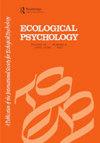自闭症与三合一游戏:社会与物质相互关系的一堂实物课
IF 1.7
3区 心理学
Q3 PSYCHOLOGY, EXPERIMENTAL
引用次数: 6
摘要
摘要儿童与物体的关系通常被视为在一个不同于其他人的社会文化领域的物理、非社会领域中运作。最具影响力的自闭症理论就是这一假设的例证,强调了与他人相处的问题,以及与物体相对完整的交往。这篇文章挑战了僵化的社会物质鸿沟的概念。它研究了自闭症儿童物体使用普遍中断的证据,以及强调我们与人和事物关系相互关系的发展生态学和社会文化研究,认为与他人相处的困难本身应该导致我们在物体使用中出现相应的问题。为了支持这一论点,一项实证研究将自闭症儿童(1-6岁)及其父母的三元(父母-对象-婴儿)游戏与发育匹配的典型和唐氏综合症二元游戏进行了比较。比较了孩子对父母邀请的反应以及每个孩子与物体和/或父母接触的时间比例。与对照组中的儿童相比,自闭症患者更有可能对父母邀请他们以特定方式对物体采取行动表示不感兴趣,因为他们专注于自己对物体的使用,而不太可能遵守这种邀请。他们与父母和物体共同参与的时间也较少,而更多的时间不参与或只专注于自己对物体的使用。这些发现是在Gibson(1979)的可供性概念的背景下讨论的,以进一步理解自闭症儿童和非自闭症儿童物体使用的社会中介,以及自闭症中不寻常的儿童-物体关系可能在破坏正在进行的互动中发挥的作用。本文章由计算机程序翻译,如有差异,请以英文原文为准。
Autism and Triadic Play: An Object Lesson in the Mutuality of the Social and Material
ABSTRACT Children's relations to objects are often seen as operating in a physical, asocial realm distinct from the sociocultural realm of other people. The most influential theories of autism exemplify this assumption, emphasizing problems in relating to other people alongside relatively intact dealings with objects. This article challenges the notion of a rigid social-material divide. It examines evidence of widespread disruption in the object use of children with autism, alongside developmental ecological and sociocultural research highlighting the mutuality of our relations to people and things, to argue that difficulties in relating to other people should themselves lead us to expect corresponding problems in object use. In support of this argument findings are presented from an empirical study comparing the triadic (parent-object-infant) play of children with autism (ages 1–6) and their parents to that of developmentally matched typical and Down syndrome dyads. Children's response to parental invitations and the proportion of time each child spent engaged with objects and/or their parents were compared. In contrast to the children in the comparison groups, those with autism were more likely to show no interest in parental invitations to act on an object in a particular way due to being preoccupied with their own use of an object and less likely to comply with such invitations. They also spent less time jointly engaged with their parent and an object and more time unengaged or focused exclusively on their own use of an object. These findings are discussed in the context of Gibson's (1979) concept of affordances to further our understanding of the social mediation of object use in children with and without autism and the role unusual child-object relations in autism might play in disrupting ongoing interaction.
求助全文
通过发布文献求助,成功后即可免费获取论文全文。
去求助
来源期刊

Ecological Psychology
PSYCHOLOGY, EXPERIMENTAL-
CiteScore
3.30
自引率
10.50%
发文量
8
期刊介绍:
This unique journal publishes original articles that contribute to the understanding of psychological and behavioral processes as they occur within the ecological constraints of animal-environment systems. It focuses on problems of perception, action, cognition, communication, learning, development, and evolution in all species, to the extent that those problems derive from a consideration of whole animal-environment systems, rather than animals or their environments in isolation from each other. Significant contributions may come from such diverse fields as human experimental psychology, developmental/social psychology, animal behavior, human factors, fine arts, communication, computer science, philosophy, physical education and therapy, speech and hearing, and vision research.
 求助内容:
求助内容: 应助结果提醒方式:
应助结果提醒方式:


